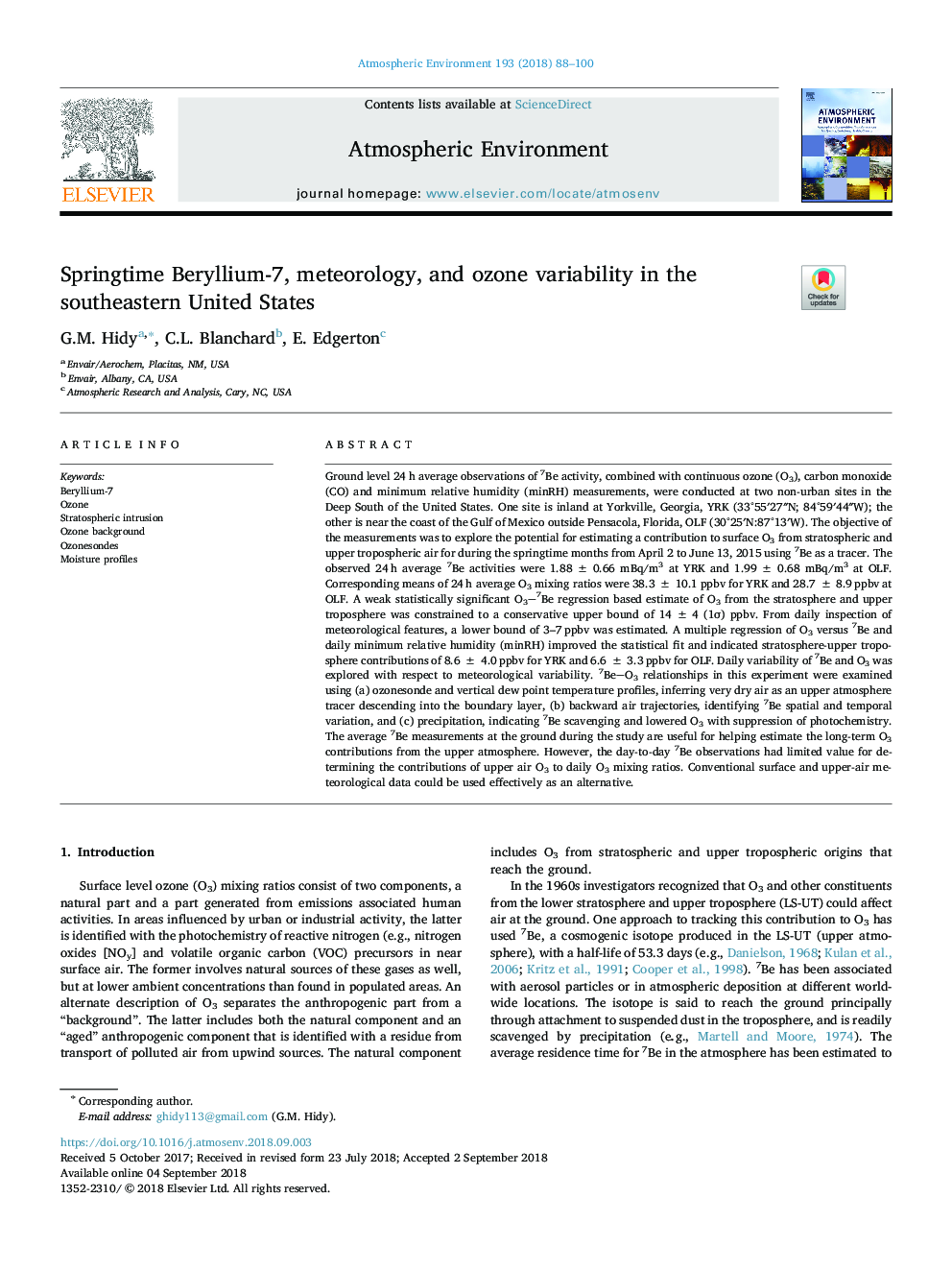| Article ID | Journal | Published Year | Pages | File Type |
|---|---|---|---|---|
| 10149604 | Atmospheric Environment | 2018 | 13 Pages |
Abstract
Ground level 24â¯h average observations of 7Be activity, combined with continuous ozone (O3), carbon monoxide (CO) and minimum relative humidity (minRH) measurements, were conducted at two non-urban sites in the Deep South of the United States. One site is inland at Yorkville, Georgia, YRK (33°55â²27â³N; 84°59â²44â³W); the other is near the coast of the Gulf of Mexico outside Pensacola, Florida, OLF (30°25â²N:87°13â²W). The objective of the measurements was to explore the potential for estimating a contribution to surface O3 from stratospheric and upper tropospheric air for during the springtime months from April 2 to June 13, 2015 using 7Be as a tracer. The observed 24â¯h average 7Be activities were 1.88â¯Â±â¯0.66 mBq/m3 at YRK and 1.99â¯Â±â¯0.68 mBq/m3 at OLF. Corresponding means of 24â¯h average O3 mixing ratios were 38.3â¯Â±â¯10.1â¯ppbv for YRK and 28.7â¯Â±â¯8.9â¯ppbvâ¯at OLF. A weak statistically significant O37Be regression based estimate of O3 from the stratosphere and upper troposphere was constrained to a conservative upper bound of 14â¯Â±â¯4 (1Ï) ppbv. From daily inspection of meteorological features, a lower bound of 3-7â¯ppbv was estimated. A multiple regression of O3 versus 7Be and daily minimum relative humidity (minRH) improved the statistical fit and indicated stratosphere-upper troposphere contributions of 8.6â¯Â±â¯4.0â¯ppbv for YRK and 6.6â¯Â±â¯3.3â¯ppbv for OLF. Daily variability of 7Be and O3 was explored with respect to meteorological variability. 7BeO3 relationships in this experiment were examined using (a) ozonesonde and vertical dew point temperature profiles, inferring very dry air as an upper atmosphere tracer descending into the boundary layer, (b) backward air trajectories, identifying 7Be spatial and temporal variation, and (c) precipitation, indicating 7Be scavenging and lowered O3 with suppression of photochemistry. The average 7Be measurements at the ground during the study are useful for helping estimate the long-term O3 contributions from the upper atmosphere. However, the day-to-day 7Be observations had limited value for determining the contributions of upper air O3 to daily O3 mixing ratios. Conventional surface and upper-air meteorological data could be used effectively as an alternative.
Related Topics
Physical Sciences and Engineering
Earth and Planetary Sciences
Atmospheric Science
Authors
G.M. Hidy, C.L. Blanchard, E. Edgerton,
